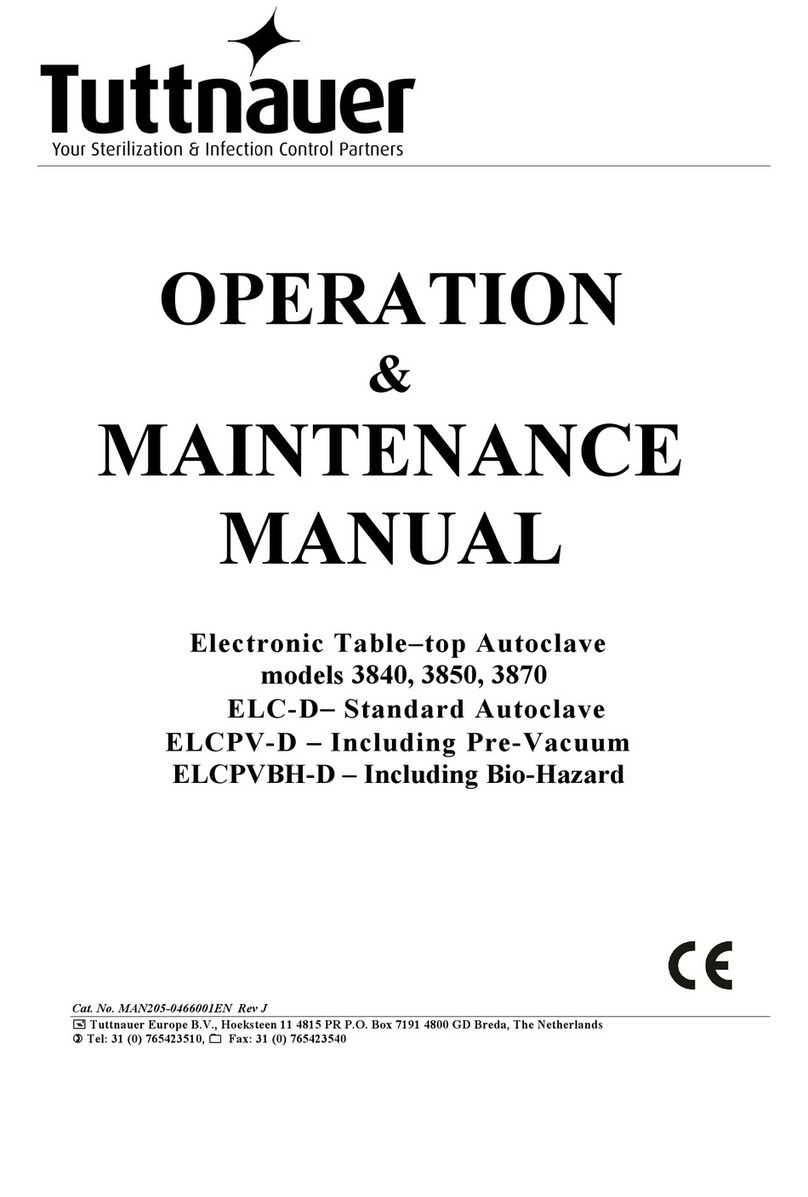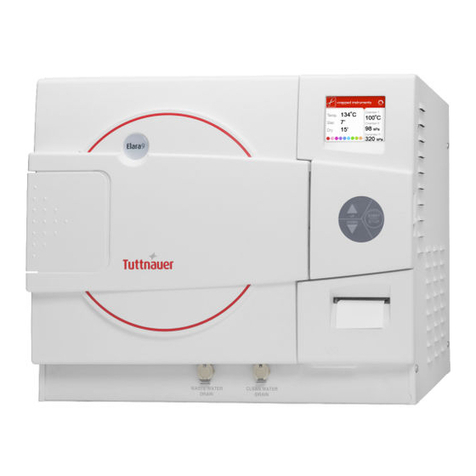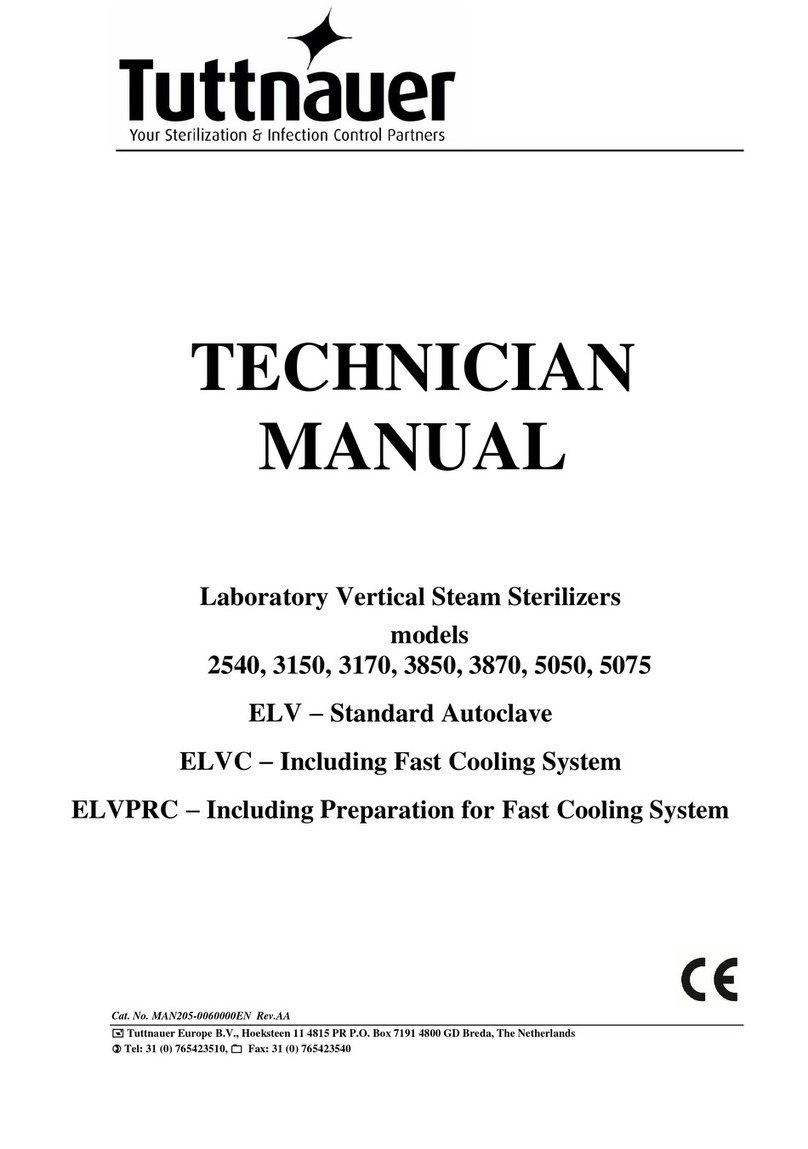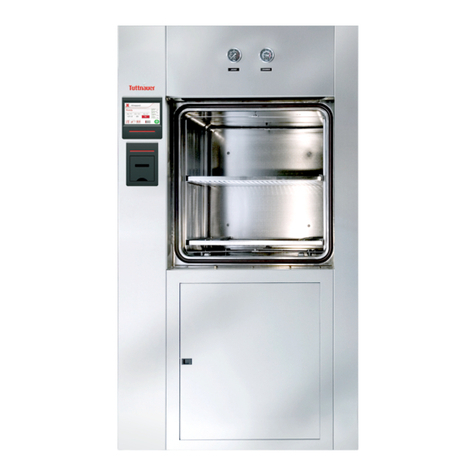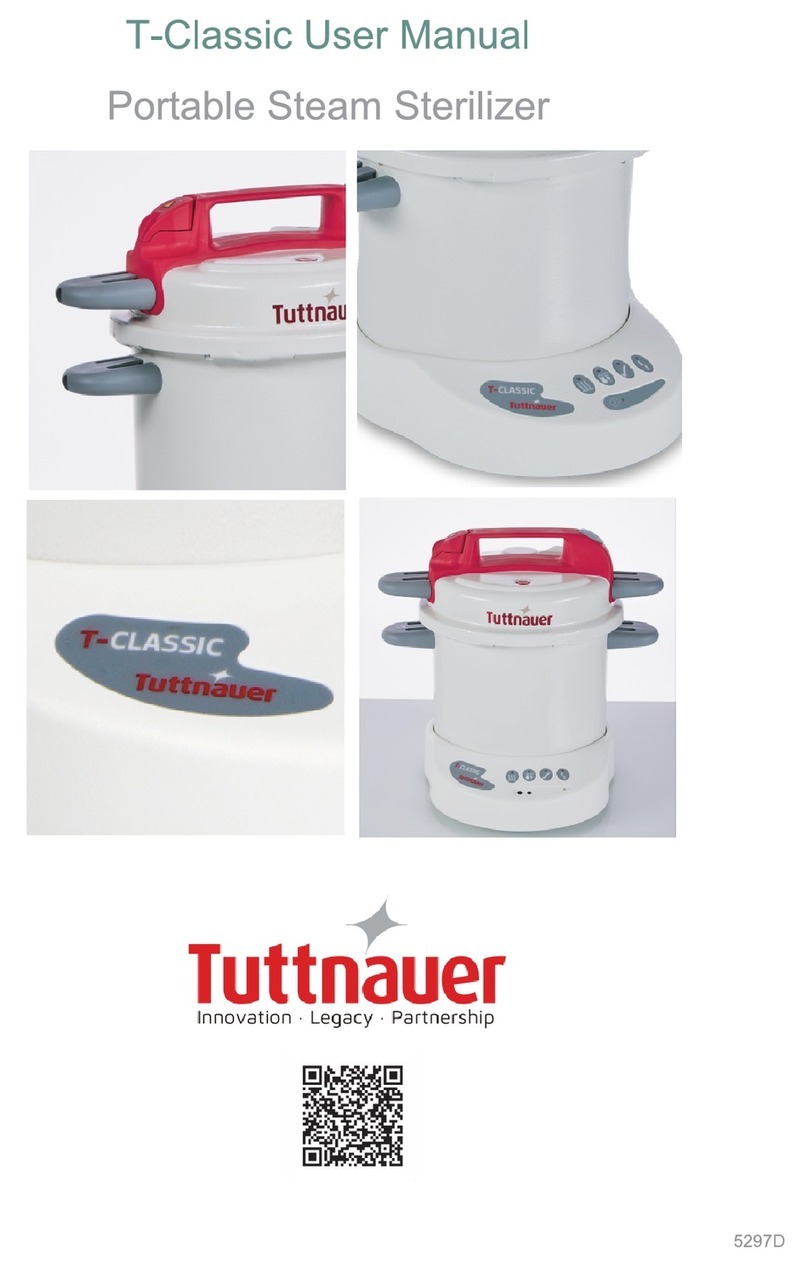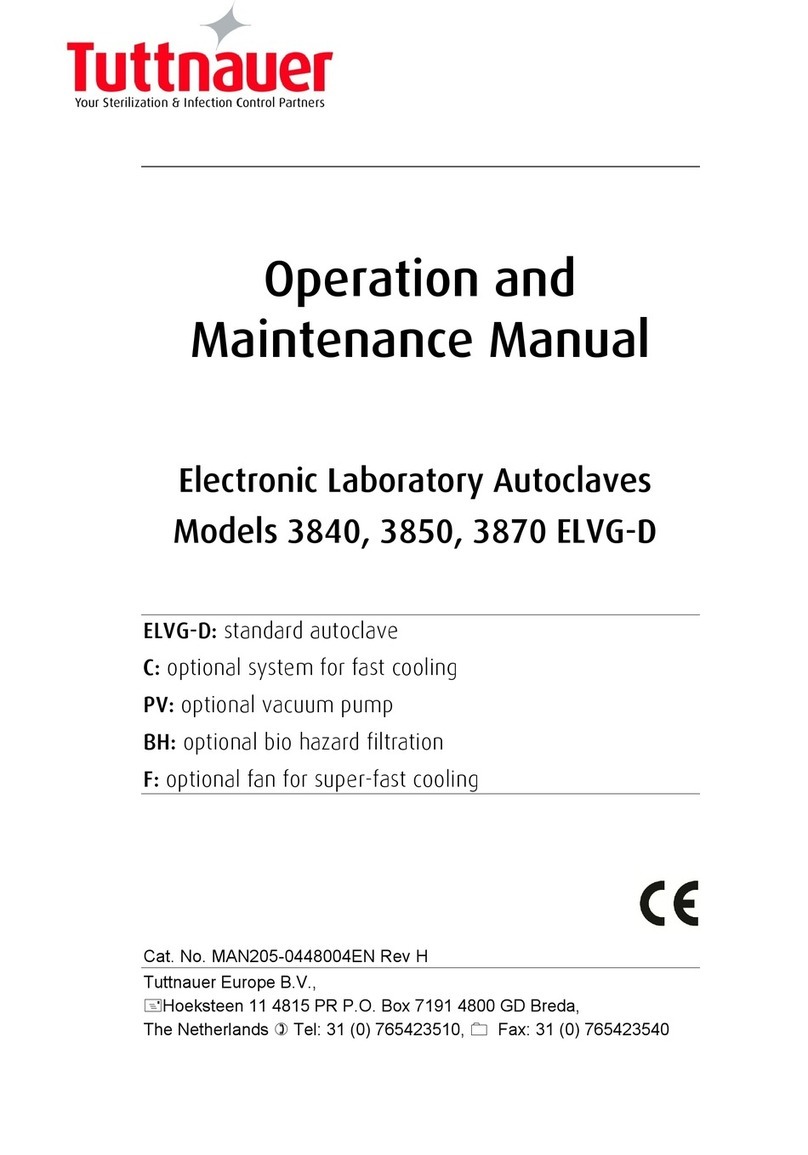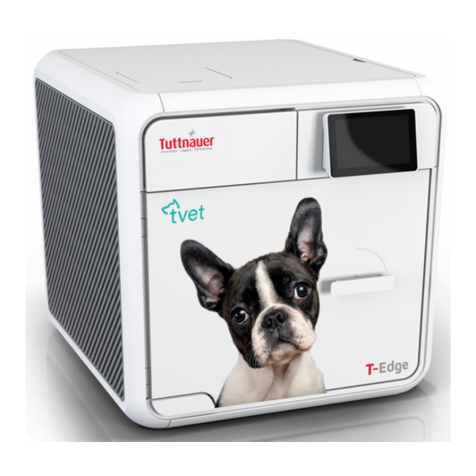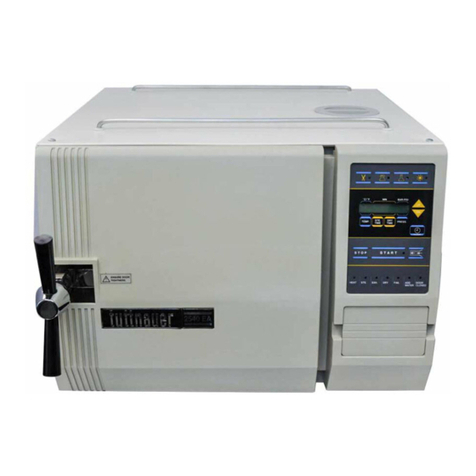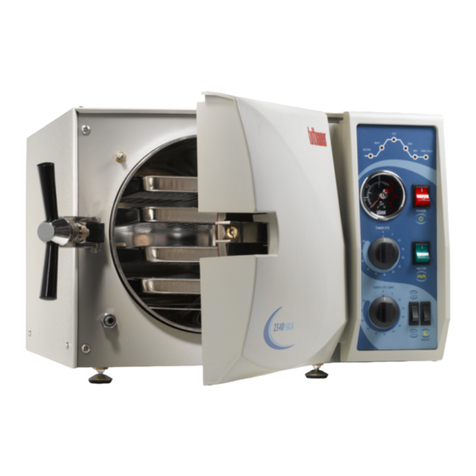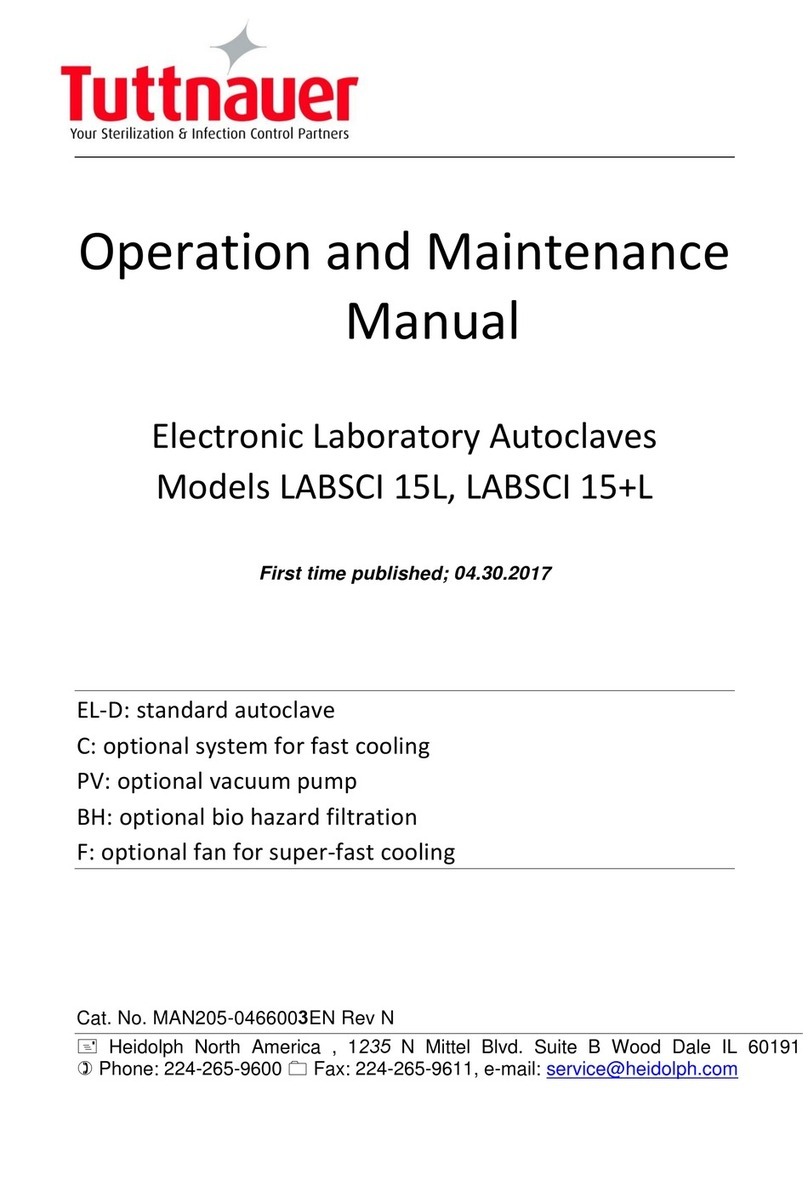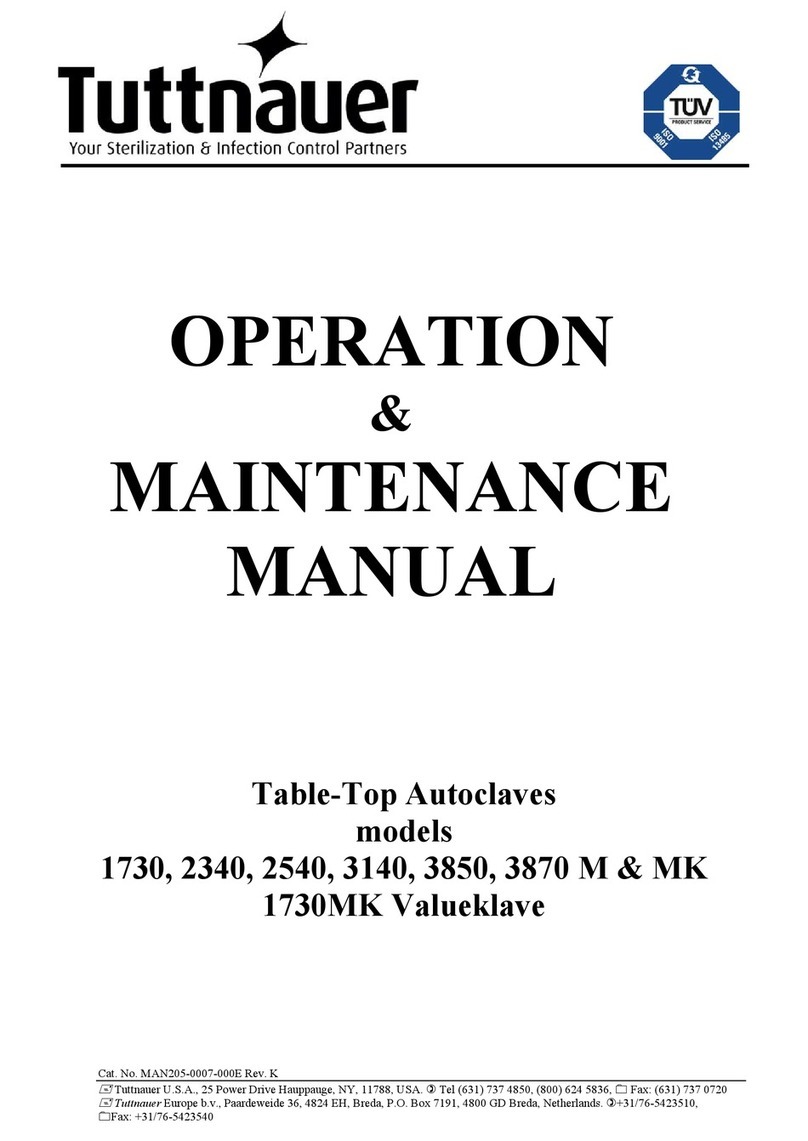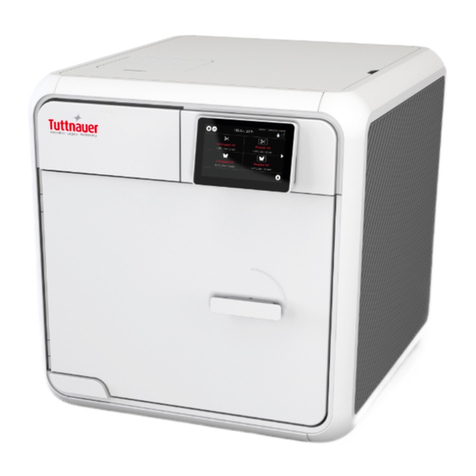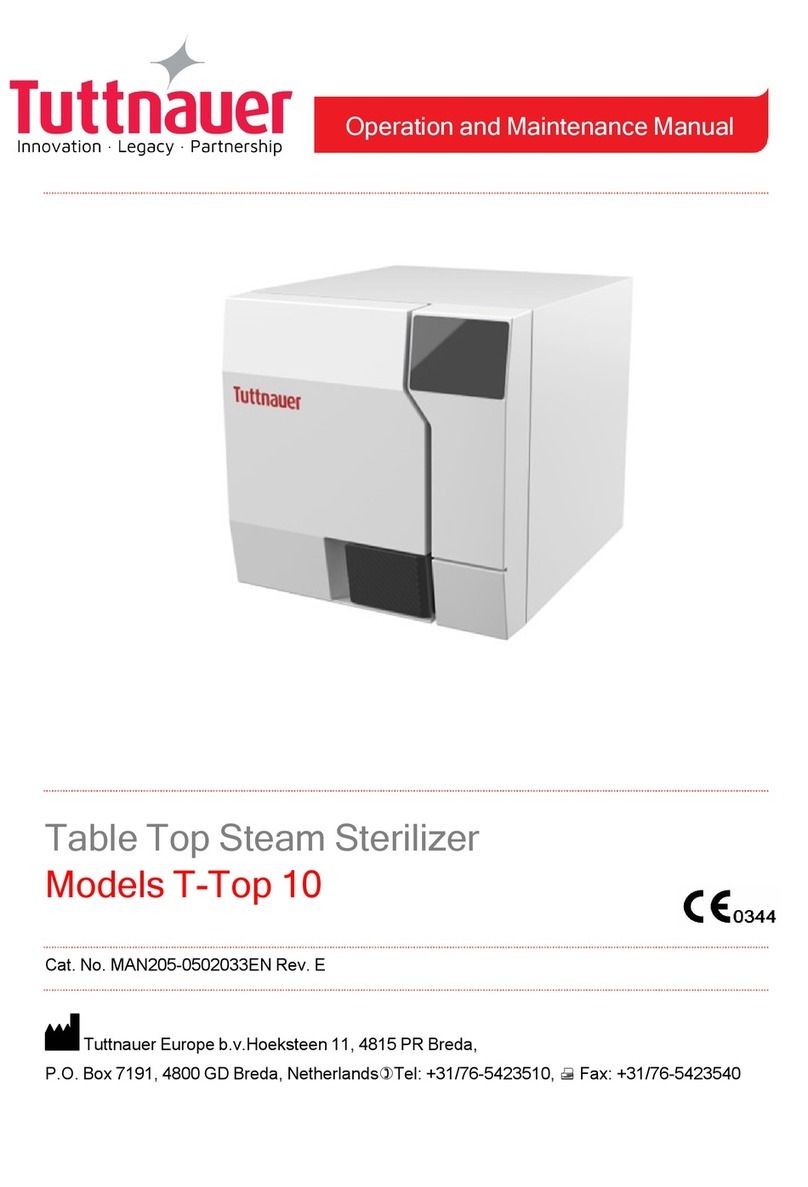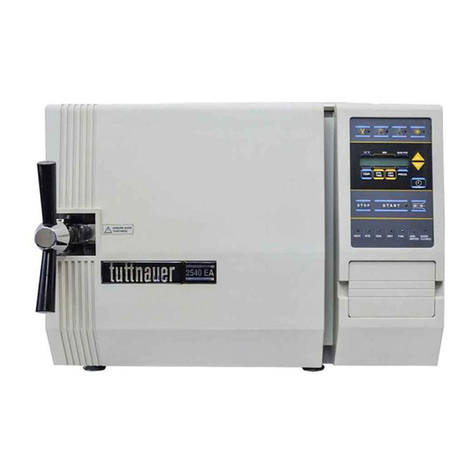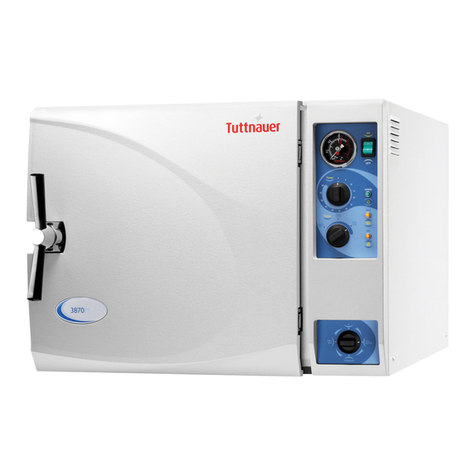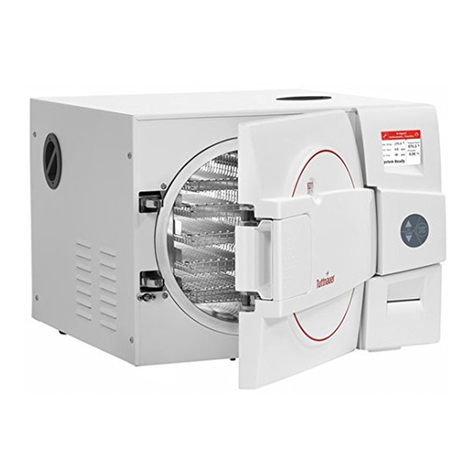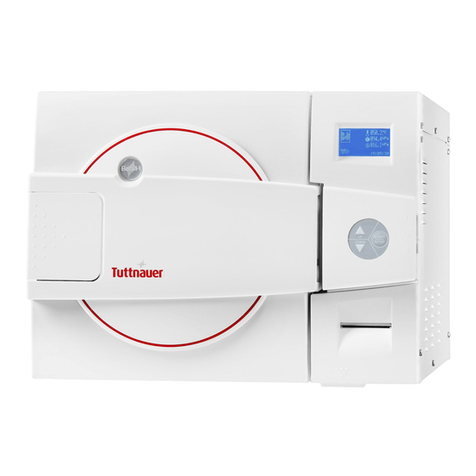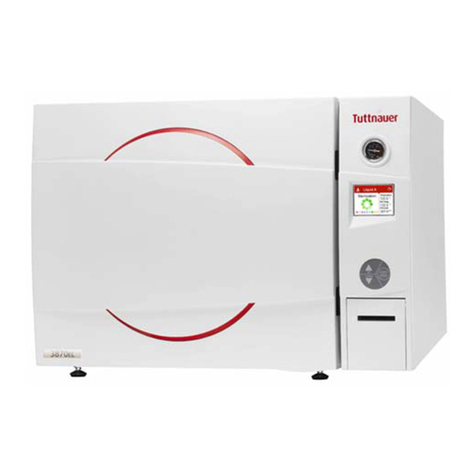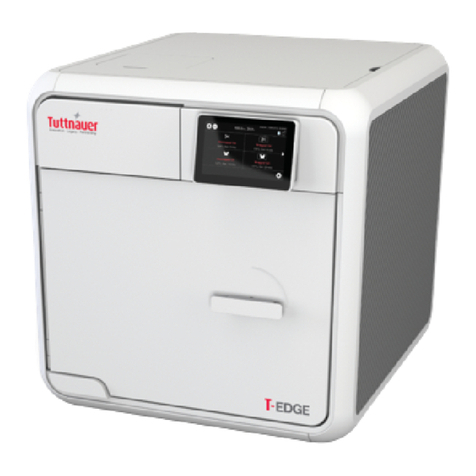Page 7 of 86 Pages
2SAFETY INSTRUCTIONS
The autoclave has unique characteristics. Please read and understand the
operation instructions before first operation of the autoclave. The following
issues may require instructions guidance provided by the manufacturer: how to
operate the autoclave, the door safety mechanism, the dangers involved in
circumventing safety means, how to ensure that the door is closed, and how to
select a correct sterilization program.
Make sure that you know where the main power switch is, where the water
cut-off valve is and where the compressed air disconnection valves (if
applicable) are located.
Autoclave maintenance is crucial for the correct and efficient function of the
device. We enclose a log booklet that includes maintenance recommendations,
with every device.
The weekly spore test is part of the preventive maintenance plan, along with
the annual validation of the sterilization processes that ensures appropriate
temperature dispersion within the chamber.
Never use the autoclave to sterilize corrosive products, such as: acids, bases
and phenols, volatile compounds or solutions such ethanol, methanol or
chloroform nor radioactive substances.
1. Never start using a new autoclave or a new steam generator before the
safety, licensing and authorization department has approved it for use.
2. All autoclave users must receive training in proper usage from an
experienced employee. Every new employee must undergo a training
period under an experienced employee.
3. A written procedure must be established for autoclave operation,
including: daily safety tests, seal inspection and door hinge inspection,
smooth action of the closing mechanism, chamber cleaning, prevention
of clogging and preservation from corrosion, what is permitted and
what is prohibited for sterilization and choosing a sterilization
program.
4. Liquids may be sterilized only with the “liquids” programs. The
container must be covered but not sealed. Sealed bottles may only be
sterilized using a special program. The bottle must be either Pyrex or a
Borosilicate glass bottle. Verify that the two temperature sensors are
located inside two different bottles to assure that the liquid temperature
is 20°C below boiling temperature for sealed bottles at the end of the
cycle.
5. When sterilizing plastic materials, make sure that the item can
withstand sterilization temperature. Plastic that melts in the chamber is
liable to cause a great deal of damage.
6. Individual glass bottles may be placed within an appropriate container.
Never place glass bottles on the floor of the autoclave. Never fill more
than 2/3 of the bottle volume.
7. On closing the autoclave's door, make sure it is properly locked before
activating.
8. Before withdrawing trays and containers, wear heat resistant gloves.
9. Before opening the door, verify that there is no pressure in the chamber
(chamber pressure gauge is located on the autoclave's front panel or
door, depends on model).
